How to implement ‘Product Interchangeability’ in SAP S/4HANA Embedded EWM
How to implement ‘Product Interchangeability’ in SAP S/4HANA Embedded EWM.
The purpose of this blog post is to unravel how the concept of Product Substitution or Parts Interchangeability can be conducted in S/4HANA Embedded Extended Warehouse Management (EWM).
It is sometimes necessary to allow substitution of one material for another within a sales order and transfer this interchangeability impact from Sales, to delivery, to picking, packing and till billing the product to customer. This is due to inventory shortages resulting from higher than usual consumer demand, delays in the supply chain, phasing out of an old style product, change in Engineering design of product in terms of Revision level.
The ability to identify and substitute acceptable products in such situations helps to avoid lost sales and increases customer satisfaction with timely deliveries.
Scenarios: In the standard order processing cycle, a customer requests a specific product that you then ship. In reality, however, there are situations where you want to substitute the product ordered with an alternative, for example a product that is repackaged for Christmas, or with a free sample or coupon.

With the product selection functions, you can flexibly manage product substitution. Based on your priorities for the customer account and restrictions imposed by the customer, you can ship a promotional item when the customer requests a standard one.
How to realise it?
SAP has given a standard concept of Material Determination in SD, however, the extension of product substitution has not been explained or explored in Embedded SAP Extended Warehouse Management in 1709, 1809 or in EWM on S/4HANA decentralised versions.
The first step is the activation of Material determination on the basis of Condition technique.
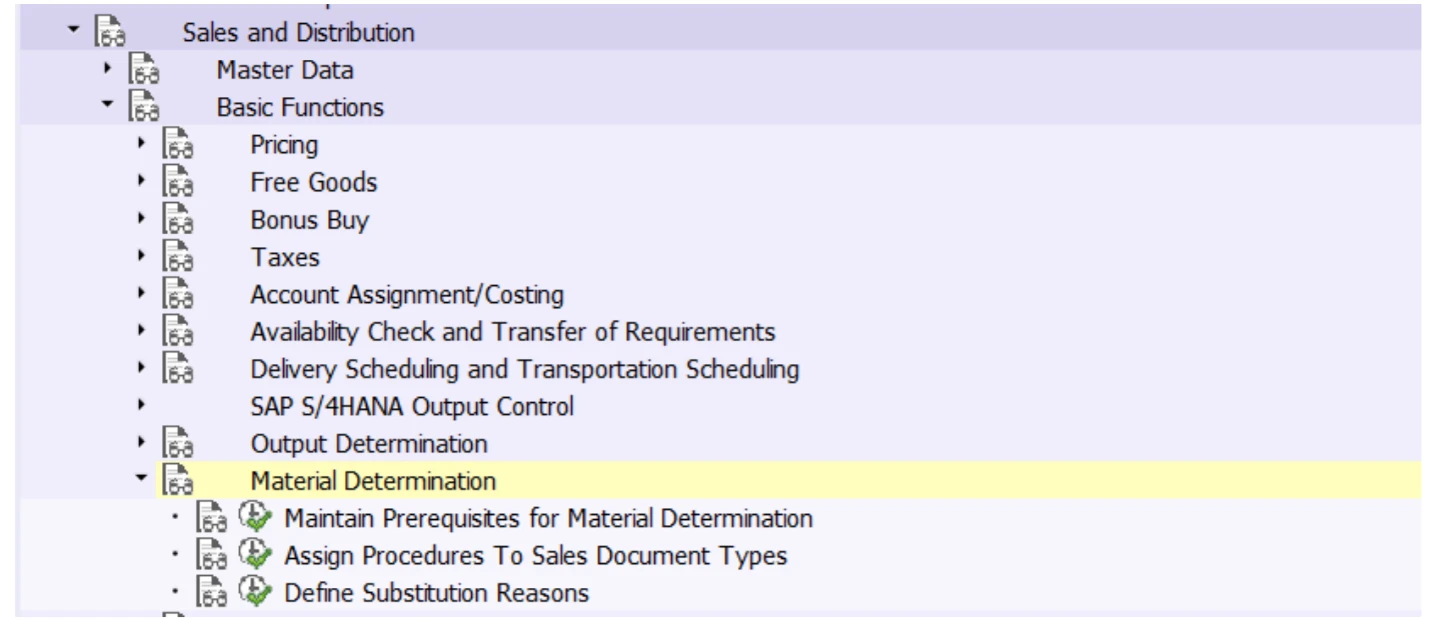
Customising in S/4HANA ERP
Product substitution functions rely heavily on the condition technique. This condition technique finds the required procedure which is assigned to the Sales doc type. Later, with the help of substitution reason and condition master data VB11, an appropriate product interchangeability is conducted in sales order.
a) Create a required condition table for the requirement. In the explained example, Sales organisation, distribution channel and Material is selected.
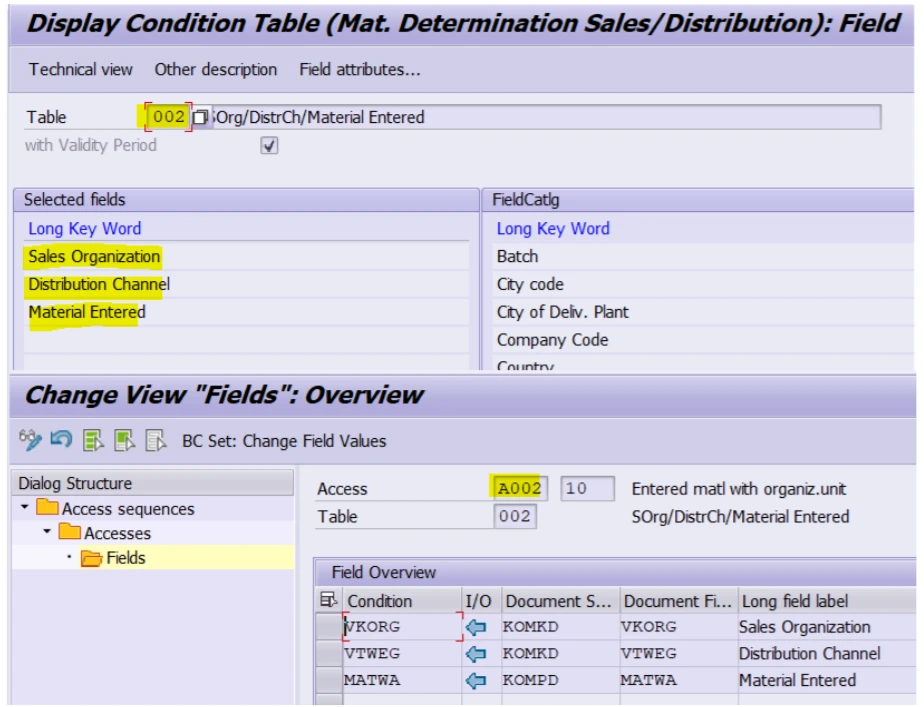
b) Assign the required procedure to the sales order
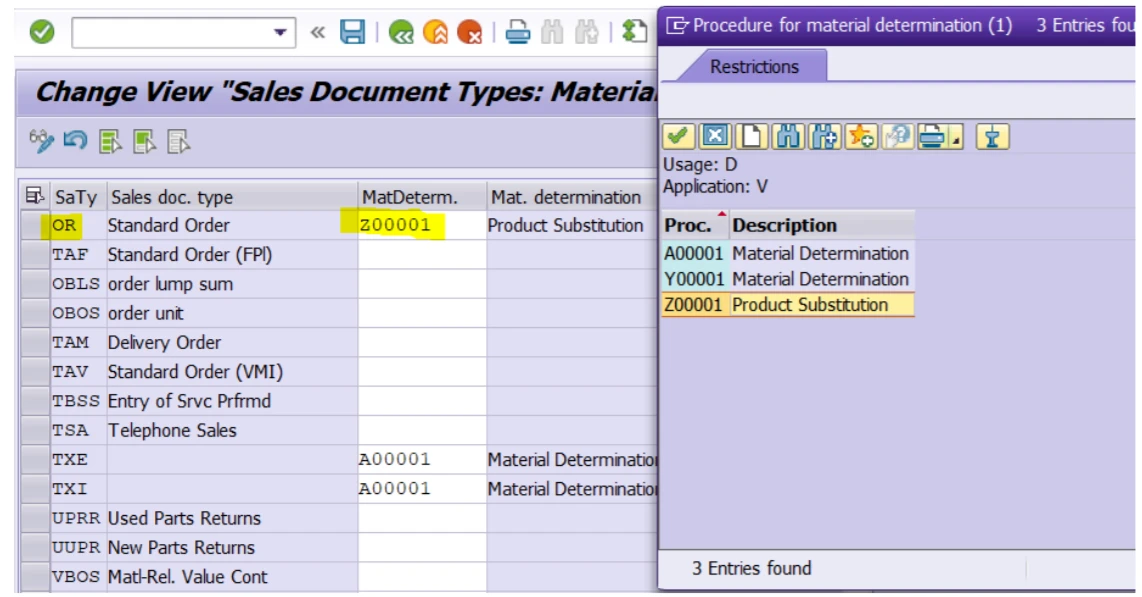
c) Create a material substitution reason with the substitution material to be reflected in Sales document.

Create Master data for Product Substitution
Go to the Create Material Determination Initial Screen (transactions VB11/VB12 in the standard SAP system)

Customising in S/4HANA Embedded EWM
SAP suggests activation of the BC Set to create item types, required customer profiles, and ERP integration for the item types for product substitution in the outbound delivery in Extended Warehouse Management (EWM).
Only activate BC Set /SCWM/DLV_OUTBOUND_SUBS in the following situations:
- When rebuilding a system
- When using product substitution in the outbound delivery process for the first time
- When restoring sample Customising entries
/SCWM/DLV_OUTBOUND_SUBS is a hierarchical BC set so there is dependency on other BC sets for the activation also. The dependent BC sets are /SCWM/DLV_OUTBOUND_PROF or /SCWM/DLV_OUTBOUND, so these dependent BC sets must exist in the system. If these are not available, you are required to activate them as well.
1) The activation of BC sets creates the necessary document types and item types (ODSS and ODSR), hierarchy types and item type for higher level.
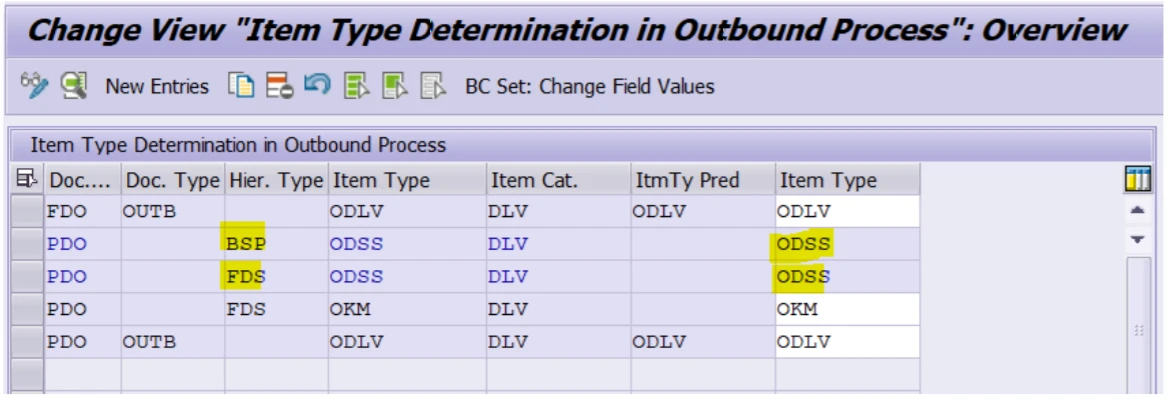
2) The BC sets activation links the S/4 Logistics execution (LE) delivery type and item type to EWM elements.
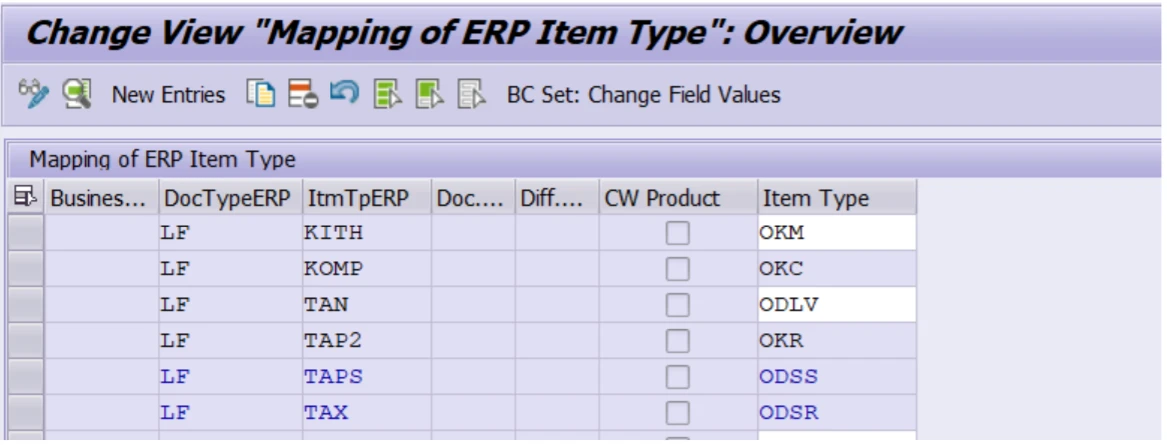
Replication steps: 1) Create a customer order with the required document type OR and with Main Material.
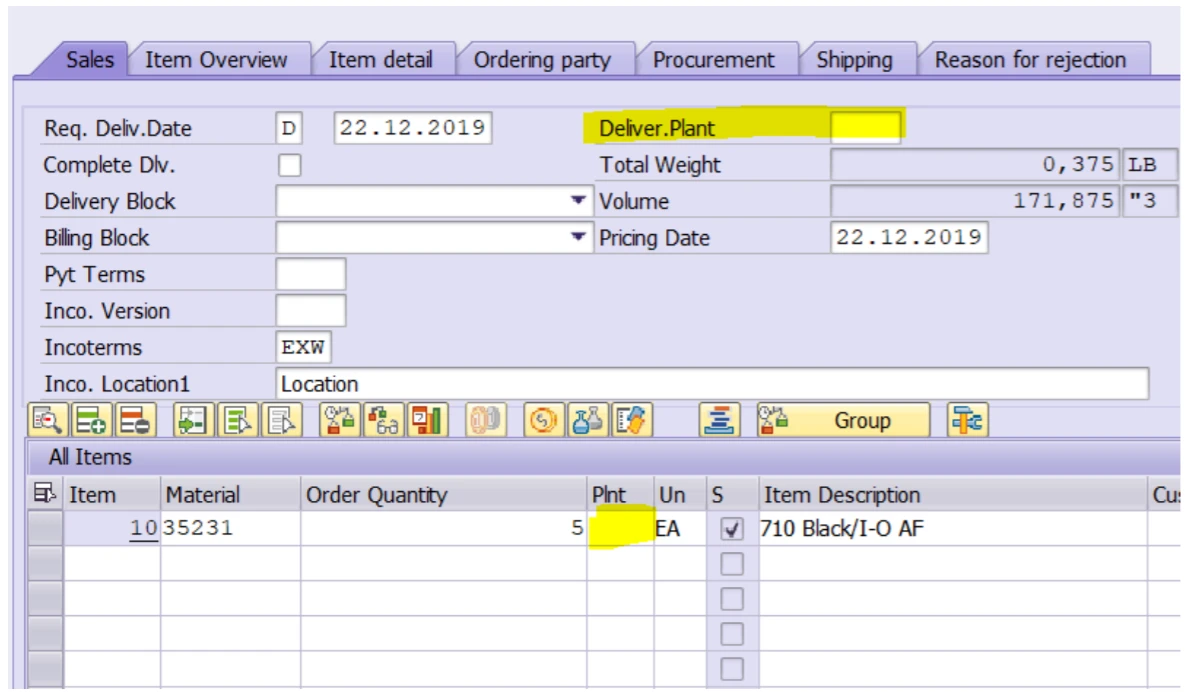
If you forget to enter the plant, and plant is the part of condition table, then the plant field will be blank.
Note: If Delivery plant is not given manually, at item level during sales order creation, then the value of field VBAP-WERKS is still empty at Material determination. For Material determination the system uses components of structures KOMKD and KOMPD.
Here is how the value of field KOMPD-WERKS is determined according to standard logic:
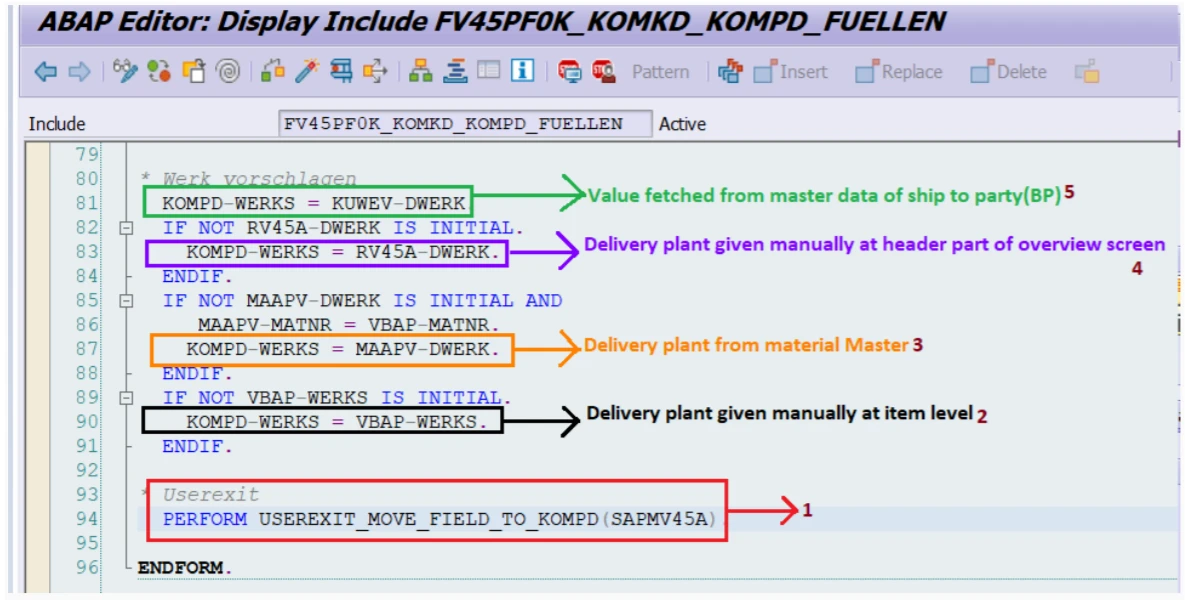
The logic of fetching plant is in below priority.
- By customer logic from user exit USEREXIT_MOVE_FIELD_TO_KOMPD
- Manually given Plant at item level (VBAP-WERKS)
- Delivery plant from related Material master (MAAPV-DWERK)
- Manually given Plant info at header level (RV45A-WERKS)
- Delivery plant from master data of Ship-to Party (KUWEV-DWERK)
So, enter the required plant in SO item level for this example:

The main product (35231 Item category TAX) is automatically substituted for the item category TAPS via item category customisation with interchangeable product 3741.

2) Create an outbound delivery the Order.
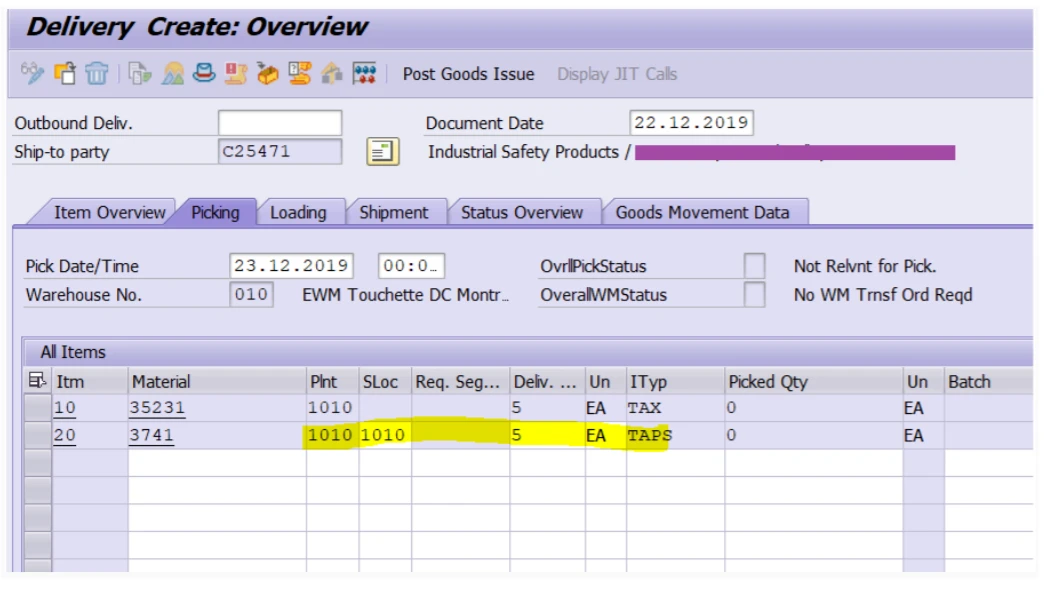
3) The logistics execution (LE) delivery is distributed to EWM for Picking, Packing and Goods issue.
Check /SCWM/PRDO - Maintain Outbound Delivery Order.
The logistics execution delivery is available and parts have been successfully substituted with corresponding item type ODSS. Now, the picker in warehouse is fully confirmed with regard to which product needs to be picked and stage it to the Goods issue area.
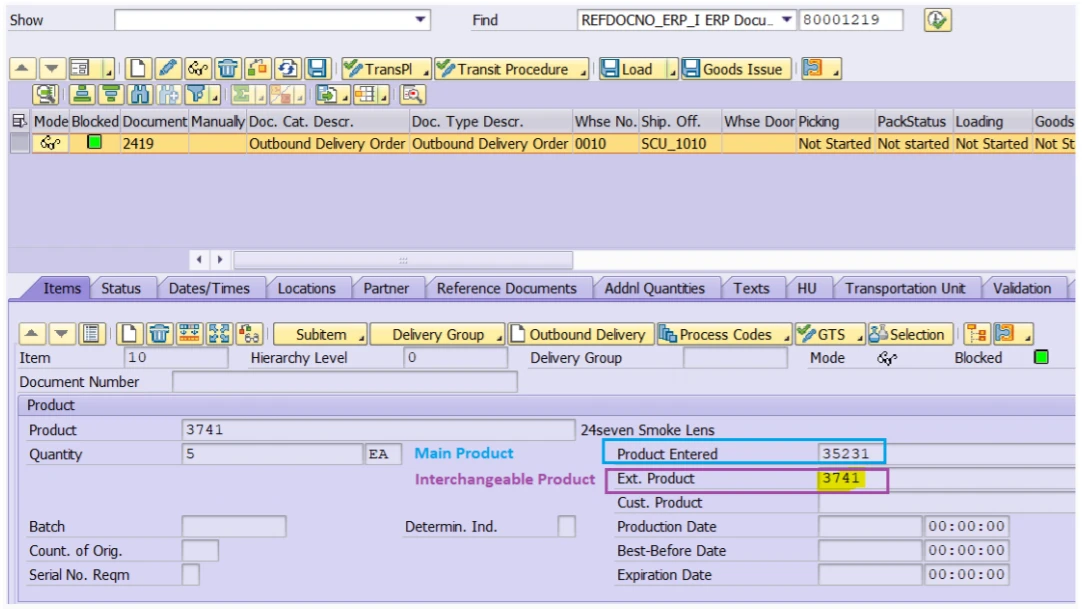
4) Carry out EWM activity, Picking and Goods Issue from SCWM/PRDO
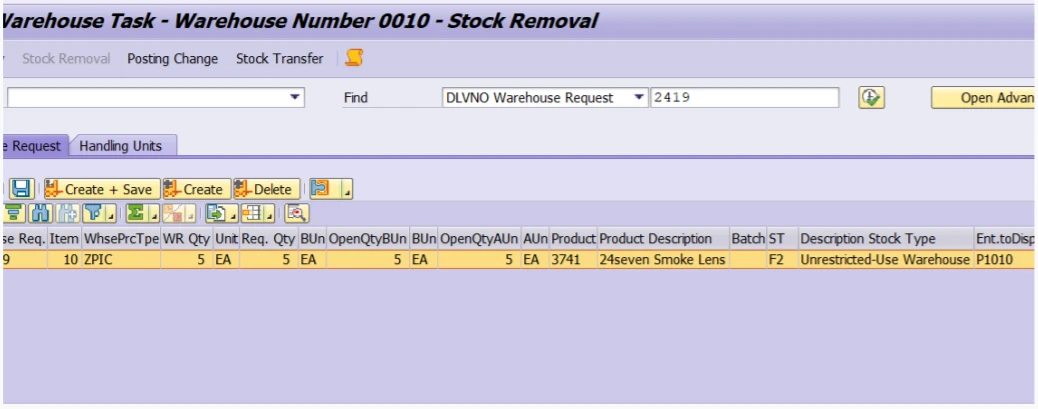
Users can pick and confirm the Warehouse task for the required delivery having Substituted product in the delivery.
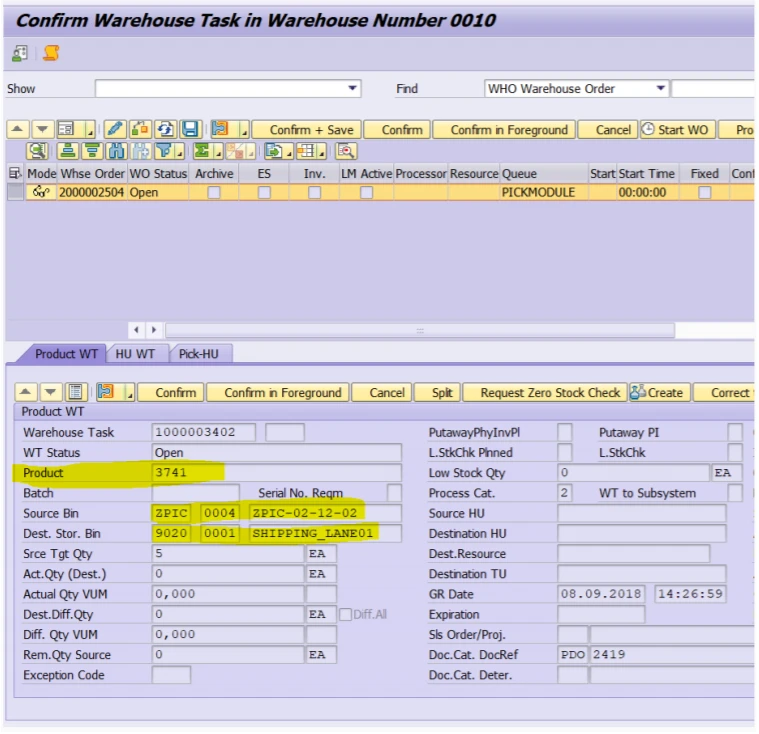
Picking is completed and now logistics execution delivery needs to be goods issued.
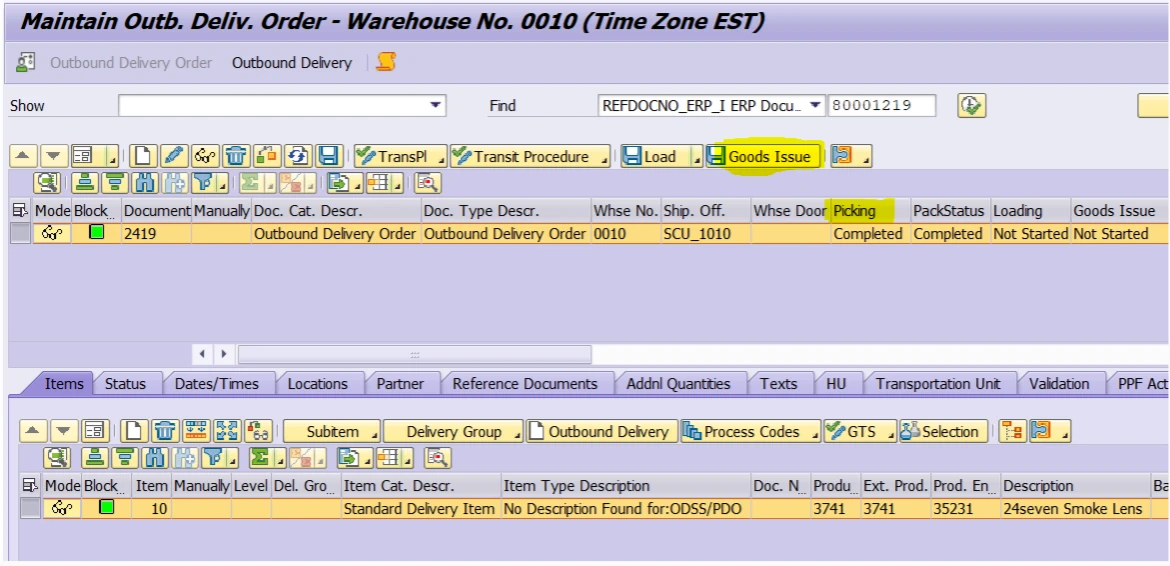
5) GI the delivery.
LE delivery is picked and Gled.
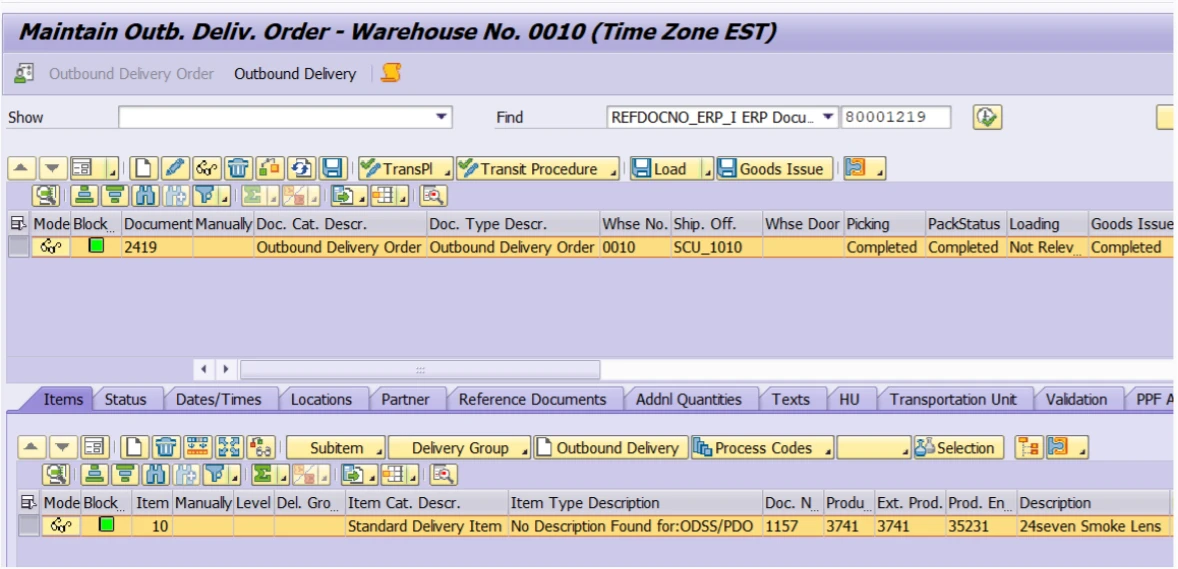
6) Check LE delivery in ERP
The goods issue is posted with movement type (601) for the item category TAPS of the interchangeable product. The main product is not relevant for goods issue as movement type is blank.
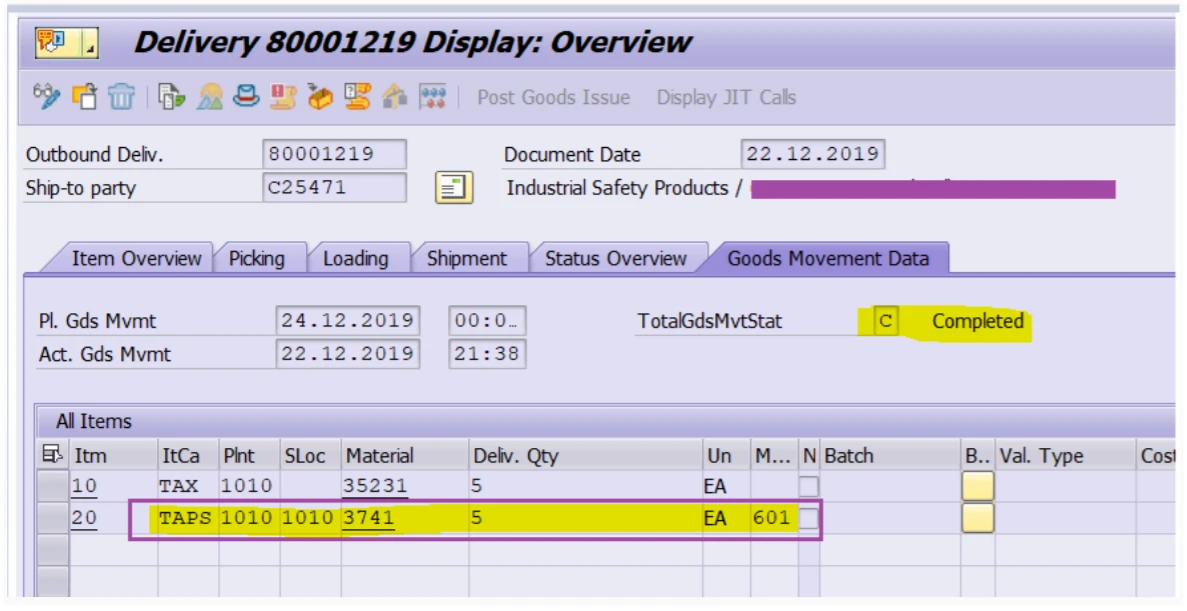
Note: The movement type in outbound delivery is always determined via item category configuration, Main item and interchangeable products have movement types determined from the customisation below:
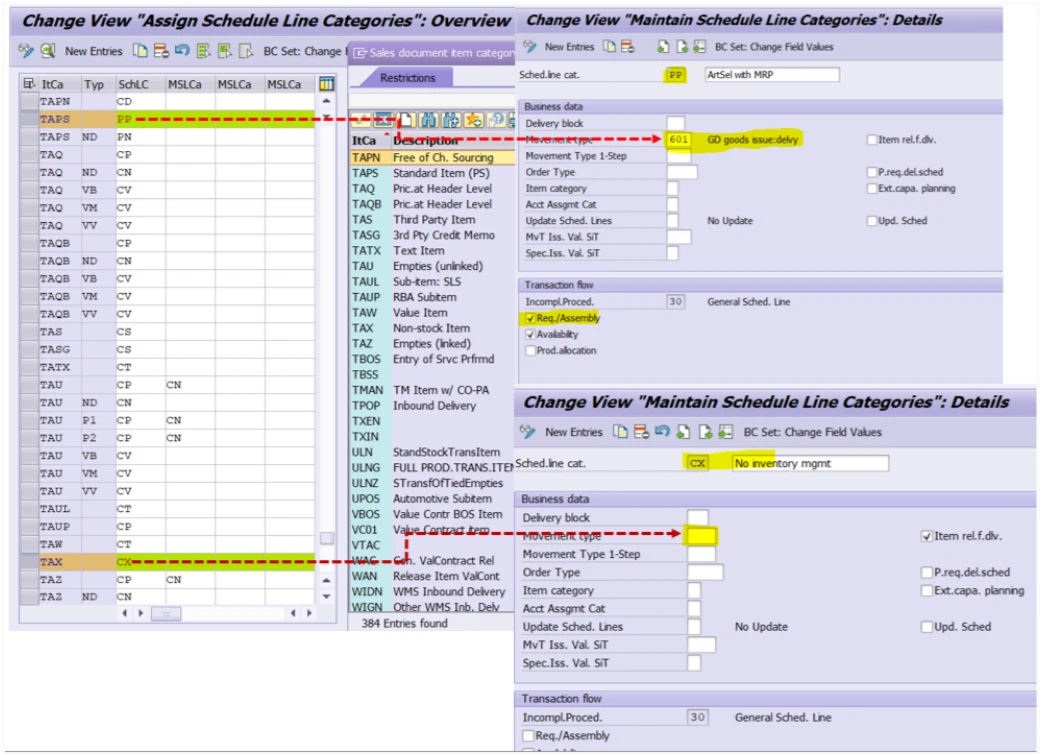
Limitations of Product substitution
- No ATP check is carried out during product substitution. As a work around, rule-based ATP checks need to be used
- No rescheduling of Sub-item is carried during ATP
- For EAN/UPC code used in condition records, material determination cannot be carried out with EAN/UPC code
References:
- SAP Note 2494704 - SAP S/4HANA 1709: Release information and restrictions for EWM in SAP S/4HANA
- SAP Note 2743253 - No ATP delivery proposal screen for material determination
- SAP Note 2511549 - EAN/UPC code cannot be used in material determination
- SAP Note 1816904 - Material determination: no rescheduling for sub-items